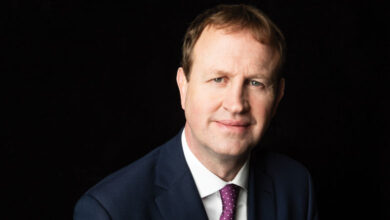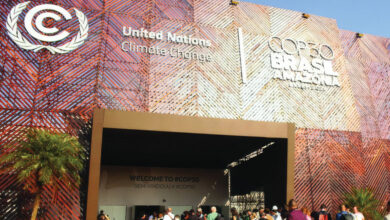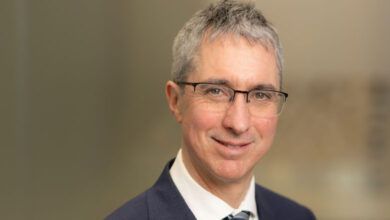Making Ireland safer for women and children

Covid-19 may be easing, but Ireland’s epidemic of domestic, sexual and gender-based violence (DSGBV) continues to increase. This presents many challenges for public policy makers, private corporations, educators, non-profit organisations, communities, and private individuals. This is a societal problem explains Mary McDermott CEO of Safe Ireland, the causes are systemic, the effects wide-reaching, and the solutions critically under-developed.
Safe Ireland is the national development and co-ordination body with responsibility for Domestic Violence (DV) which over time has developed three distinct functions: investigating the causes and effects of DV; developing guidelines for best practice in the delivery of local support services; and influencing national strategic policy. This is achieved by working directly with a range of public bodies; local independent frontline Domestic Violence Services; academic institutions; philanthropists; and, more recently, private corporate partners.
Until recently, domestic violence (which may manifest as any combination of psychological abuse, physical assault, or coercive control) was concealed as a private matter within the realm of the ‘family’. Whilst responsibility for exiting violence in the form of ‘leaving’ rested primarily on the woman; where there are children, the extended burden of protecting them from the violence was, and still is, placed entirely on the mother. Whilst welcome progress has been made in Ireland over the past decade – in particular the enactment of the ground-breaking Domestic Violence Act 2018 — responses have largely remained reactive, piecemeal, and poorly evidenced. Shifting the safety of women and children from the private domain of family to the public domain of society, requires a cultural transition from paternalist care to autonomous support.
The lack of investment in the current infrastructure of frontline support services, non-integrated siloed public policy, family court in-camera shields, insufficiently trained police, inadequately trained judiciary, deficits in social science syllabi, a dearth of research, deficient workplace knowledge; when coupled with scant public education and poor understanding of domestic violence, have contributed to meagre outcomes, and continuing upwards trends of violence, femicide and infanticide.
In March 2019, at the outset of the Covid-19 pandemic, Ireland ratified the Council of Europe Convention on Preventing and Combating Violence Against Women and Domestic Violence, better known as the Istanbul Convention. This timely affirmation provides an excellent framework for the re-imagining of a national approach to domestic violence over the coming decade. Safe Ireland has developed a discussion paper titled No Going Back which portrays the separate journeys of both women and children from violence to safety and sets out what a reconfigured national policy and service delivery infrastructure might look like. The organisation is also a member of the Department of Justice Executive Committee, guiding the process of developing the next National Strategy on DSGBV which will adopt the four pillars of Prevention, Protection, Prosecution and Policy Integration as set out in the Istanbul Convention.

“Whilst welcome progress has been made in Ireland over the past decade – in particular the enactment of the ground-breaking Domestic Violence Act 2018 – responses have largely remained reactive, piecemeal, and poorly evidenced. Shifting the safety of women and children from the private domain of family to the public domain of society, requires a cultural transition from paternalist care to autonomous support.”
In the meantime, the burden of facilitating women and children from violence to safety rests heavily on a network of independent, non-profit frontline services which are only partially funded from public monies and rely heavily on grants, philanthropy, alms and corporate donations. There are 39 such services across Ireland which are affiliated as members to Safe Ireland. Each deliver various combinations of services to women and children including crisis helpline support, information and advocacy, Garda and court accompaniment, counselling and welfare advice, along with emergency provisions such as food and clothing. 21 of these services also operate staffed refuges — short stay emergency accommodation facilities which provide immediate (usually around-the-clock) access to safe accommodation for women and children — when they are no longer safe at home.
At the beginning of the Covid-19 lockdown in 2020, there were only 139 refuge units available across the entire country (compared to the 500 units required to meet our Istanbul Convention obligations) and this number was further decimated under the revised Covid-19 Public Health Safety requirements. In response, an innovative partnership forged between Safe Ireland and Airbnb resulted in the release of spare hotel room capacity as emergency shelter, free-of-charge, which enabled women trapped with their abusers to take a first step towards freedom and recovery. The safety needs of survivors were assessed by the frontline DV services before facilitating bookings, and all those accommodated continued to be closely linked in to, and supported by, DV specialists. This partnership has operated in the gaping void of state services and has, without doubt, saved the lives of women and children.
Going forward, there are many opportunities for corporate governors, senior managers, and decision makers across the corporate world to be part of a safer future for women and girls. Through donating time, expertise, or funds to a local service; organising in-service training for staff; reducing workplace violence risks especially for those working from home; adopting domestic violence leave policies for survivors; organising awareness events; or developing a strategic partnership with Safe Ireland.
E: admin@safeireland.ie
W: www.safeireland.ie







